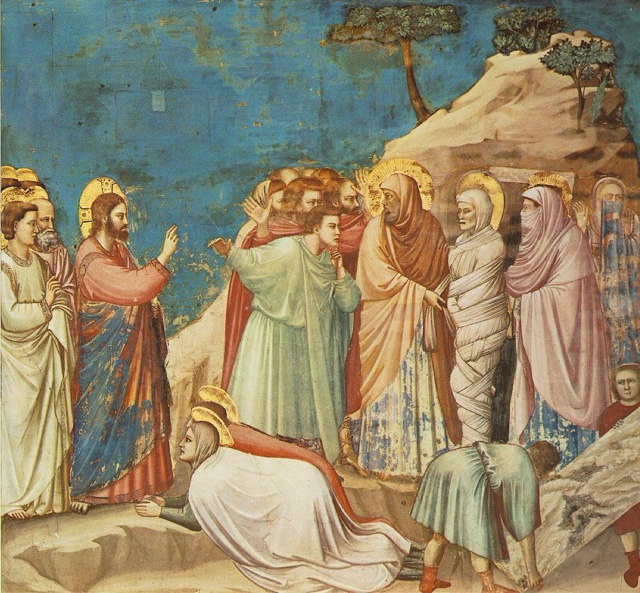The Arena Chapel in Padua has a fresco cycle of 38 large narrative scenes created by the artist, Giotto (1266-1337), that were completed by 1305.
Many of these poignant images of humanity in the Arena Chapel make Giotto the most remarkable precursor and one of the greatest sources of the Italian Renaissance of the 15th century.
The subjects are the life of the Virgin Mary and the life of Jesus. Artists had other sources beside the Old and New Testaments to consult including the Golden Legend of Voragine and Meditations by a monk in the 13th c.
This is how we had to access the chapel: A limited group of visitors (including us) with timed-ticket reservations entered a de-humidifying area watched an introductory video. After 15 minutes we went inside the Arena chapel to view Giotto's frescoes. In 15 minutes we were dismissed from the space.
Here are some of my favorite scenes.
5. Meeting at the Golden Gate:
Joachim and Anne had been childless and were elderly. Barrenness was considered a sign of God's disfavor and Joachim had been expelled from the temple. Then Anne received an angelic visitation.
In this fresco Joachim and Anne reunite and embrace joyfully after learning of Anne's unexpected conception of Mary.
6. The patron Scrovegni is offering up the Arena Chapel to atone for his sins and redeem the family reputation. His father was a wealthy and notorious usurer of Padua who was so widely despised that even author Dante made a place for him in the Divine Comedy.
7. Kiss of Judas: Violence is suggested by the clash of bodies, bristling array of staves, and torches that radiate out of the crowd converging on Jesus. Peter is shown severing the ear of the servant of the high priest.
In the Gospels Judas offers to identify and betray Jesus by kissing him. In Giotto's painting, it is Judas's embrace that betrays Jesus. His yellow robe envelopes Jesus. Giotto focuses all attention on the two heads - the nobility of Jesus's profile with the brutishness of Judas. The intensity of Jesus' gaze seems to stay the kiss.
8. Lamentation: All eyes are on the dead body laid in the foreground. Giotto presents the human tragedy of death and of the bereft. In the sky, ten angels provide their own lament in counterpoint to that of the human mourners. It is a powerful representation of great loss and grief.
9. Flight into Egypt: An angel appeared to Joseph in a dream and warned him to flee with his family to Egypt because Herod wanted to kill the child who would become king of the Jews. In this scene the Madonna is a monumental figure. Her figure and the mountain behind her create a ledge of space that implies a sense of danger. The Madonna appears beige, but her robes were originally painted with azurite which has disappeared over time.
10. Raising of Lazarus: in the foreground the two sisters of Lazarus, presented as a unified mass, prostrate themselves in earnest belief in Jesus's power to restore life. The large sloping rock leads the eye to Jesus and to his hand, which is above the heads of Mary and Martha. The slope simultaneously expands his gesture - carrying the miraculous power from his hand across the composition to Lazarus.
This painting is divided down the middle, with Jesus, his disciples, and the sisters on the left and those with Lazarus and the tomb at the right - the division between life and death.
In a memorable touch that is part of Giotto's genius, the sisters are not yet aware, as the viewer is, that Lazarus's eyes and lips are already opening.
I hope you enjoyed this visit into the Arena chapel of Padua.
Credit for the art notes goes to William Kloss, Smithsonian art historian, an inspiring teacher.











No comments:
Post a Comment